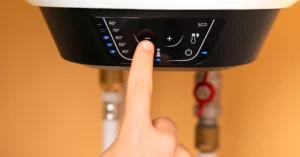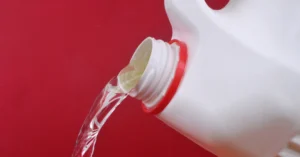Something just doesn’t feel right. The sink drains more slowly than usual, you hear odd tapping in the walls, or maybe the water bill has gone up for no reason. Deep down, you know there’s probably something going on with your plumbing. But where do you even start?
If you’re a homeowner or property manager, these moments are all too familiar. You worry that if you don’t catch it early, it could lead to water damage, mold, or expensive repairs. We get it, your home is your biggest investment, and plumbing issues can threaten your comfort, your time, and your money.
That’s why we put together this simple plumbing inspection checklist. Whether you’re doing a routine inspection or getting ready for a new season, this guide will help you spot red flags before they cause serious damage.
Why Plumbing Inspections Matter More Than You Think
Every homeowner wants to avoid a flooded bathroom or a broken water heater. But most problems don’t start big, they start quietly. A small drip behind a wall. A loose hose under the sink. A clog that’s been forming for weeks.
Without regular inspections, these small issues get missed. And by the time they show up, it’s often too late. That’s why having a reliable plumbing inspection checklist is so important for every homeowner.
At Solid Plumbing & Drains, Inc., we help families throughout San Diego keep their homes safe, clean, and efficient. We’ve seen firsthand how routine inspections save people thousands of dollars and weeks of stress. This checklist is based on the same steps we use during our professional inspections, broken down so you can do a basic version yourself.
What You’ll Get From This Guide
By the end of this blog, you’ll have:
- A complete, easy-to-follow home plumbing inspection checklist
- A clear understanding of where and how to check key plumbing systems
- Preventive tips to keep your pipes, appliances, and fixtures in great shape
- Signs to look for before calling in a pro
- An action plan in case you do need professional help
Complete Residential Plumbing Inspection Checklist
You don’t need to be a plumber to spot early warning signs. This plumbing inspection checklist is split by areas of your home and includes exactly what to look for.
Regular use of this plumbing inspection checklist can help you catch problems early, before they require emergency plumbing services.
Bathroom
1. Check Faucets and Showerheads
- Look for leaks, even slow drips
- Turn handles and test water pressure
- Make sure water flows evenly from all openings
- Feel the temperature change (does hot water kick in?)
2. Inspect Sink and Tub Drains
- Do they drain quickly?
- Any gurgling sounds?
- Smell the drain (a foul odor may mean a clog is building)
If you notice slow drainage during your plumbing inspection checklist review, consider professional drain cleaning services.
3. Examine the Toilet
- Flush and see if water flows properly
- Open the tank — is it refilling too slowly or too fast?
- Look for water leaking around the base or under the tank
Kitchen
4. Check the Sink and Faucet
- Look underneath the sink for signs of leaks
- Check the faucet for corrosion or buildup
- Feel around the sprayer or soap dispenser for drips
5. Test the Garbage Disposal
- Run water and flip the switch
- Listen for odd sounds like grinding or humming
- If it’s jammed, don’t force it (unplug and reset)
6. Dishwasher Connection
- Check for leaks at the water inlet and drain hose
- Smell around the base, foul odors can signal drain issues
- Make sure no water is pooling inside after use
Laundry Room
7. Washer Hoses
- Look for cracks, bulges, or loose connections
- Touch the hoses (old rubber gets stiff and brittle)
- Use stainless steel braided hoses for a longer lifespan
8. Drainage Pipe
- Watch the drain during a rinse cycle — does it overflow or back up?
- Check the wall around the drain for water spots or mold
Water Heater
9. Tank Inspection
- Look for rust or leaks at the base
- Touch the area around the pressure relief valve (it should be dry)
- Listen for popping or banging when heating (a sign of sediment buildup)
10. Temperature Setting
Set to 120°F (49°C), which is safe for skin, prevents overheating, and saves energy. This step in your plumbing inspection checklist can help prevent scalding and reduce energy costs.
11. Anode Rod (if possible)
Inside your tank, this rod attracts corrosion, so your tank doesn’t rust. It should be checked by a pro every few years. Consider our water heater maintenance services for this professional inspection.
Outdoors
12. Hose Bibs and Outdoor Faucets
- Turn them on and watch for leaks or weak pressure
- In colder climates, make sure frost-proof valves are working
13. Yard Drainage and Sewer Smells
- Do you notice standing water?
- Smell something weird near the sewer line? That’s a warning sign.
Cleanouts and Vents
Check cleanout caps (those round plastic or metal covers in your yard or driveway). Are they loose, cracked, or missing? This important step in your plumbing inspection checklist can prevent sewer backups.
Inside the Walls (Things You Can Still Spot)
Water Stains or Warped Walls
Especially under sinks, behind toilets, or near the water heater. Bubbling paint or soft drywall = possible leak behind the wall. If you discover these signs during your plumbing inspection checklist review, consider professional water leak detection services.
Unusual Sounds
- Hissing when water isn’t running? It could be a hidden leak.
- Banging when turning off a faucet? That’s water hammer and may need a pressure check.
Water Meter Test
- Turn off all water in the home
- Watch the meter (if it moves, you may have a hidden leak)
When to Call a Plumber for an Inspection
While this plumbing inspection checklist covers a lot, some problems aren’t easy to see. That’s where we come in.
At Solid Plumbing & Drains, Inc., we offer full residential plumbing inspections that go far beyond the basics:
- Camera inspections for sewer lines
- Water pressure testing
- Leak detection using thermal and acoustic tools
- Fixture evaluation for efficiency and performance
- Honest estimates and no upselling
The Plumbing-Heating-Cooling Contractors Association recommends professional inspections at least every two years, or annually for homes over 20 years old.
How Often Should You Use This Plumbing Inspection Checklist?
A full inspection using this plumbing inspection checklist once a year is best. You should also inspect:
- Before buying or selling a home
- At the change of seasons (especially winter to spring)
- After a major plumbing repair or flood
- If you notice higher bills, slow drains, or low pressure
Regular use of this plumbing inspection checklist can help you implement proper preventative maintenance strategies.
Maintenance Tips to Keep Plumbing in Top Shape
Beyond using your plumbing inspection checklist, these maintenance tips will help keep your system running smoothly:
- Use drain catchers in sinks and showers
- Don’t flush anything but toilet paper
- Avoid pouring grease or oil down the drain
- Keep a plunger and a drain snake on hand
- Add enzyme-based cleaners to your routine every 1–2 months
You don’t have to be a pro to protect your plumbing. Just walking through your home once or twice a year and following this plumbing inspection checklist can help you catch small problems before they turn into major repairs.
Consider our Solid Care Plan for just $144/year to complement your own inspections with professional maintenance and discounts on repairs.
Understanding Your Home’s Plumbing System
To make the most of your plumbing inspection checklist, it helps to understand how your home’s plumbing works. Your system has three main parts: the water supply system that brings fresh water in, the fixtures and appliances that use the water, and the drainage system that carries wastewater away.
According to the EPA’s WaterSense program, the average American household uses over 300 gallons of water daily. Regular inspections using a comprehensive plumbing inspection checklist can help ensure this water use is efficient and leak-free.
Final Thoughts: Smart Homeownership Starts Here
Using this plumbing inspection checklist regularly gives you peace of mind and represents smart homeownership. By catching small issues early, you can avoid costly emergency repairs and protect your home’s value.
Remember, this plumbing inspection checklist is a starting point. Some problems require professional tools and expertise to detect properly. When in doubt, it’s always better to have a professional take a look.
Need a Professional Plumbing Inspection?
If something doesn’t feel right after using your plumbing inspection checklist (or you just want to be proactive), call Solid Plumbing & Drains, Inc.
Our licensed plumbers will walk through every part of your system, answer your questions, and give you the confidence of knowing your home is protected. Contact us today to schedule your inspection and keep things flowing smoothly!

Laundry Room
7. Washer Hoses
- Look for cracks, bulges, or loose connections.
- Touch the hoses (old rubber gets stiff and brittle).
- Use stainless steel braided hoses for a longer lifespan.
8. Drainage Pipe
- Watch the drain during a rinse cycle — does it overflow or back up?
- Check the wall around the drain for water spots or mold.
Water Heater
9. Tank Inspection
- Look for rust or leaks at the base.
- Touch the area around the pressure relief valve (it should be dry).
- Listen for popping or banging when heating (a sign of sediment buildup).
10. Temperature Setting
- Set to 120°F (49°C), which is safe for skin, prevents overheating, and saves energy.
11. Anode Rod (if possible)
- Inside your tank, this rod attracts corrosion, so your tank doesn’t rust.
- It should be checked by a pro every few years.
Outdoors
12. Hose Bibs and Outdoor Faucets
- Turn them on and watch for leaks or weak pressure.
- In colder climates, make sure frost-proof valves are working.
13. Yard Drainage and Sewer Smells
- Do you notice standing water?
- Smell something weird near the sewer line? That’s a warning sign.
- Cleanouts and Vents
- Check cleanout caps (those round plastic or metal covers in your yard or driveway)
- Are they loose, cracked, or missing?
Inside the Walls (Things You Can Still Spot)
- Water Stains or Warped Walls
- Especially under sinks, behind toilets, or near the water heater.
- Bubbling paint or soft drywall = possible leak behind the wall.
- Unusual Sounds
- Hissing when water isn’t running? It could be a hidden leak.
- Banging when turning off a faucet? That’s water hammer and may need a pressure check.
- Water Meter Test
- Turn off all water in the home.
- Watch the meter (if it moves, you may have a hidden leak).
When to Call a Plumber for an Inspection
While this checklist covers a lot, some problems aren’t easy to see. That’s where we come in.
At Solid Plumbing & Drains, Inc., we offer full residential plumbing inspections that go far beyond the basics:
- Camera inspections for sewer lines
- Water pressure testing
- Leak detection using thermal and acoustic tools
- Fixture evaluation for efficiency and performance
- Honest estimates and no upselling
How Often Should You Inspect Your Plumbing?
A full inspection once a year is best. You should also inspect:
- Before buying or selling a home
- At the change of seasons (especially winter to spring)
- After a major plumbing repair or flood
- If you notice higher bills, slow drains, or low pressure
Maintenance Tips to Keep Plumbing in Top Shape
- Use drain catchers in sinks and showers
- Don’t flush anything but toilet paper
- Avoid pouring grease or oil down the drain
- Keep a plunger and a drain snake on hand
- Add enzyme-based cleaners to your routine every 1–2 months
You don’t have to be a pro to protect your plumbing. Just walking through your home once or twice a year and following this checklist can help you catch small problems before they turn into major repairs.
That’s peace of mind. That’s smart homeownership.
Need a Professional Plumbing Inspection?
If something doesn’t feel right (or you just want to be proactive), call Solid Plumbing & Drains, Inc.Our licensed plumbers will walk through every part of your system, answer your questions, and give you the confidence of knowing your home is protected.
Call now to schedule your inspection and keep things flowing smoothly!




